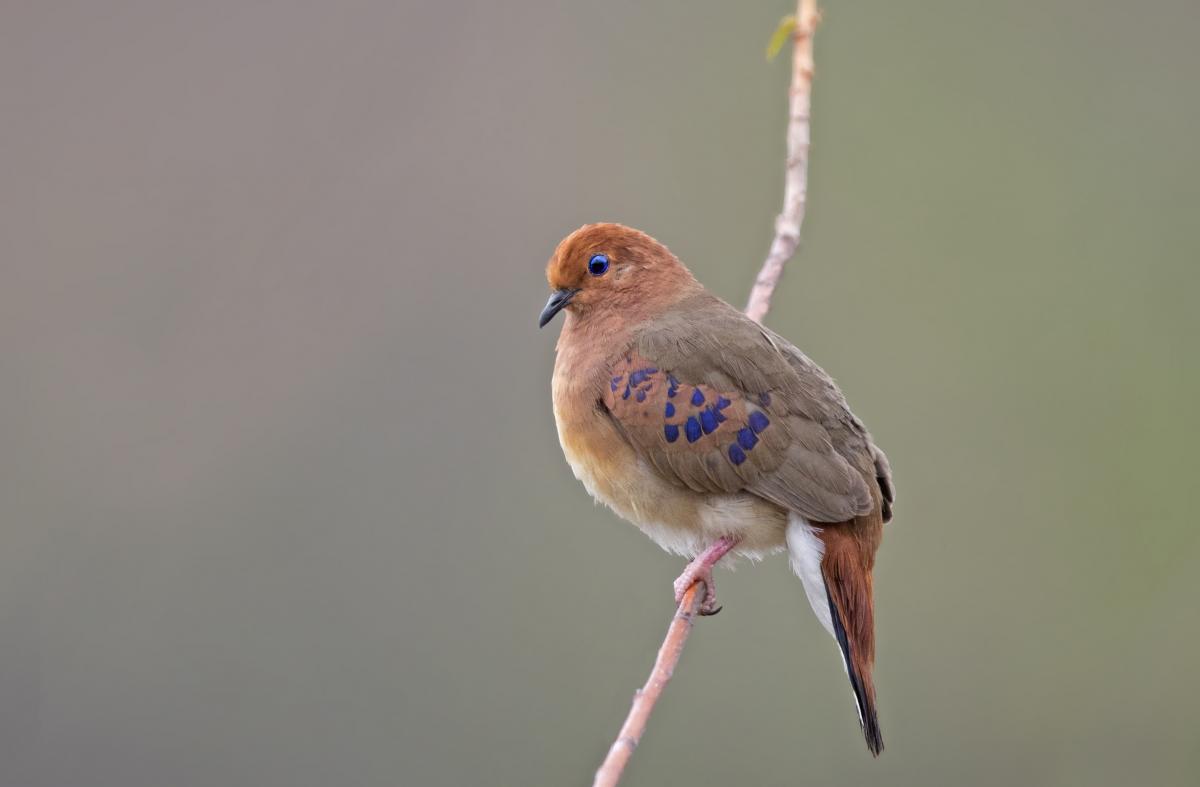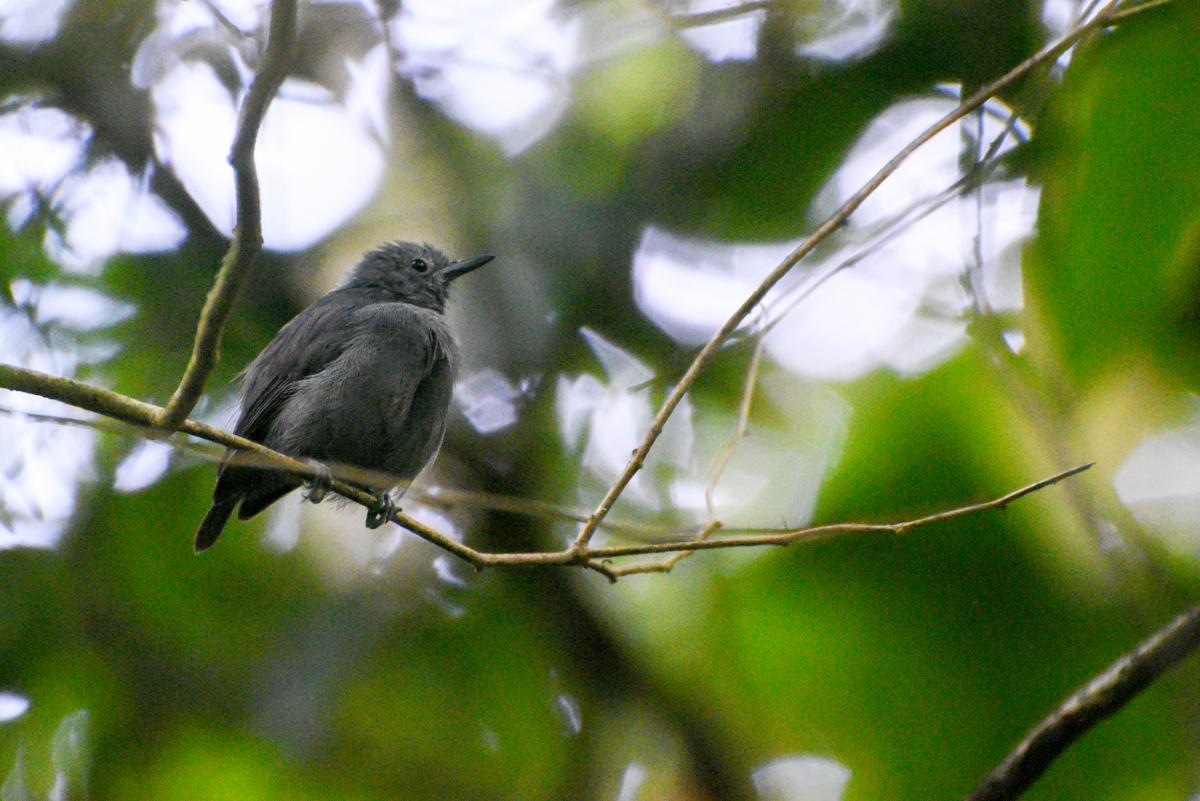No more than twenty individuals are known to remain of two Brazilian bird species, the Blue-eyed Ground-dove (Columbina cyanopis) and the Alagoas Antwren (Myrmotherula snowi). Conservationists worked from August 19th to 22nd during a workshop in Foz do Iguaçu, Brazil, in order to create an emergency plan to save both species from imminent extinction.


“The workshop to plan emergency actions to save both species and attempt their recovery in the wild is part of two National Action Plans for species conservation,” said Eduardo Barbosa from the National Center for Bird Conservation/Chico Mendes Institute for Biodiversity Conservation (CEMAVE/ICMBio).
The workshop was run by expert facilitators from the Conservation Planning Specialist Group, part of the International Union for Conservation of Nature’s Species Survival Commission (IUCN SSC), Kristin Leus and Kathy Traylor-Holzer.
“We used a tried and tested methodology to develop the plan, and the results of these workshops are considered official components of Brazilian government action plans as well as recommendations on the international stage,” comments Carmel Croukamp, CEO of Parque das Aves.
Working with species at the brink of extinction
The Blue-eyed Ground-dove had not been recorded with certainty for 75 years before being rediscovered in 2015; the Society for the Conservation of Birds in Brazil – SAVE Brasil (the national BirdLife partner) rapidly implemented a conservation project to protect habitat and learn more about the natural history of the species, known only from a small area of the Brazilian Cerrado (a savannah-like ecosystem). Today, only 20 individuals of the species are known.
The Alagoas Antwren survives in a single protected area in Alagoas State, Northeastern Brazil. Numbers in this highly deforested landscape have declined dramatically and the total population may be down to as few as 12 birds.
“In the last few years, we have lost three bird species from the Atlantic Rainforests of Northeast Brazil. We have no time to lose. This workshop is a really important step in turning the tide of bird extinctions in Brazil,” said Pedro Develey, CEO of SAVE Brasil.
Extensive efforts led by SAVE Brasil in two locations in Brazil to protect the last individuals of both species and their habitat were successful, but these species need even more help. “At this point, because there are so few individuals remaining, there is a great risk that one single event, such as one storm, a disease or a fire, wipes out these species,” said Nigel Collar of BirdLife International.
The action plan
After extensive deliberations, an action plan to build knowledge and secure both species in their natural habitat was developed. And as part of the plan, the group discussed methods of safely taking eggs into human care and raising birds in order to build a larger population that can be returned to the wild. Simultaneously, teams in the field will work to reduce the threats that are causing populations to decline.
“This is extremely delicate work; both species are tiny in size and highly specialised in what they eat and how they live, and the group will start by learning how to breed similar species of bird under human care,” says Ben Phalan, head of conservation at Parque das Aves. “After considering all of the risks, we agreed that we need to develop these methods, working with common bird species, alongside conservation in the field.”
“Breeding under human care must only be considered under very particular circumstances, but when you are down to so few birds, it has to be an option,” says Carl Jones, a biologist who participated in the workshop. Jones was instrumental in saving nine species from possible extinction, work for which he received the prestigious Indianapolis Prize.
If suitable techniques can be developed to take eggs of these species into human care without negative impacts on wild populations, they will be kept at an undisclosed location in Brazil for security purposes.
Efforts from many institutions
The workshop was hosted by the IUCN SSC Species Survival Centre Brazil, which has its headquarters at Parque das Aves, in Foz do Iguaçu. The event was organized by SAVE Brasil, Parque das Aves and the Conservation Planning Specialist Group, with the support of the American Bird Conservancy, BirdLife International, Chester Zoo, Toledo Zoo, Durrell Wildlife, Vogelpark Marlow, ESALQ/University of São Paulo, Federal University of Alagoas, Federal University of Paraiba, Federal University of Roraima, State University of North Fluminense, and ICMBio/CEMAVE.
“It’s a great honour to work together with this group of professionals, who among them have significant expertise in bringing species back from the brink of extinction. Everybody involved will keep working together to ensure a good outcome,” said Croukamp.
The workshop brought together 29 specialists, from 15 institutions, including biologists who work with the species in the field, experts in breeding under human care, researchers and conservationists. By the end of four days of intensive discussions, the group committed unanimously to start implementing the plan immediately to save the species.


